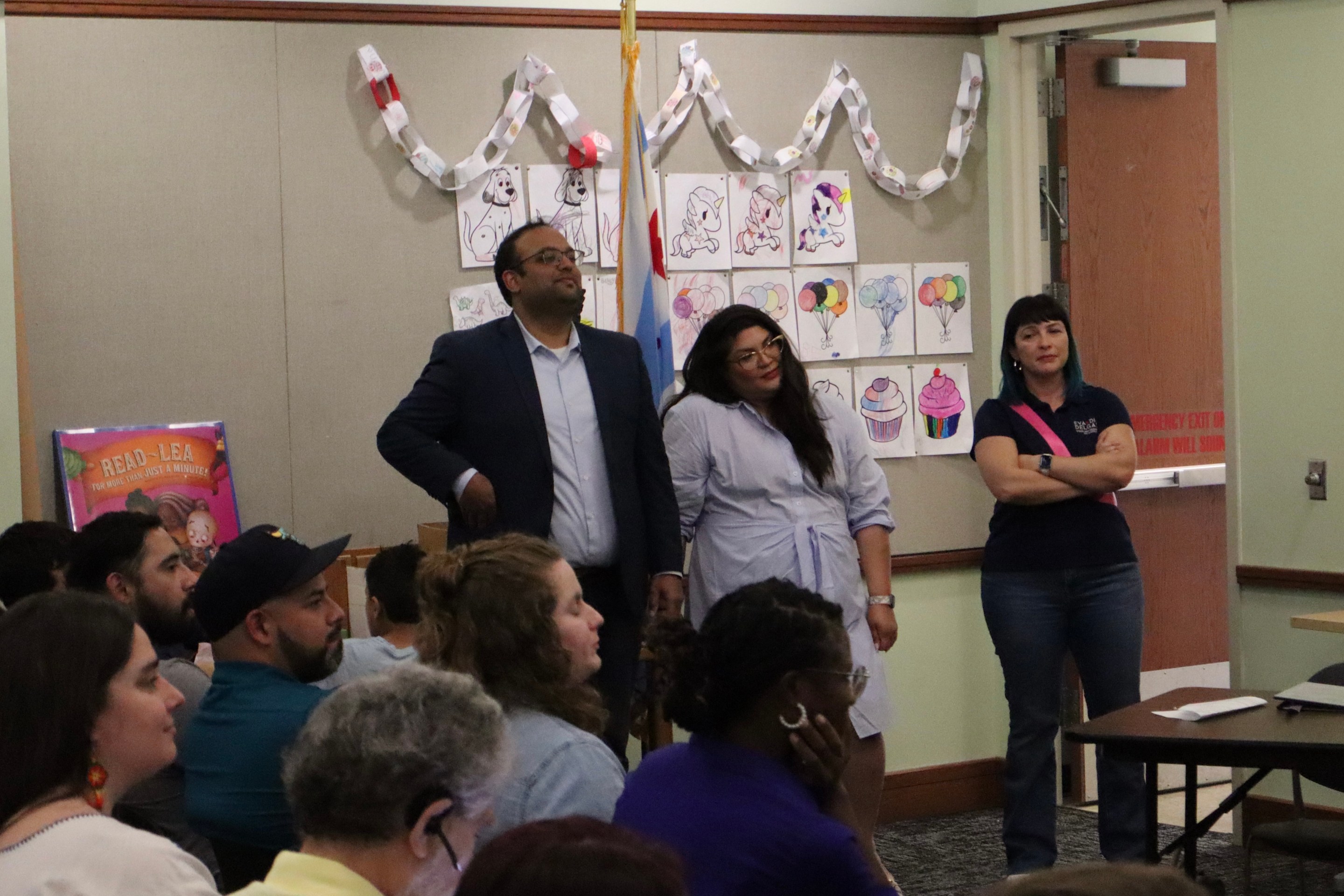Design Museum of Chicago Exhibit Looks at the Cultural History of Local Cycling
7:34 PM CDT on October 31, 2018
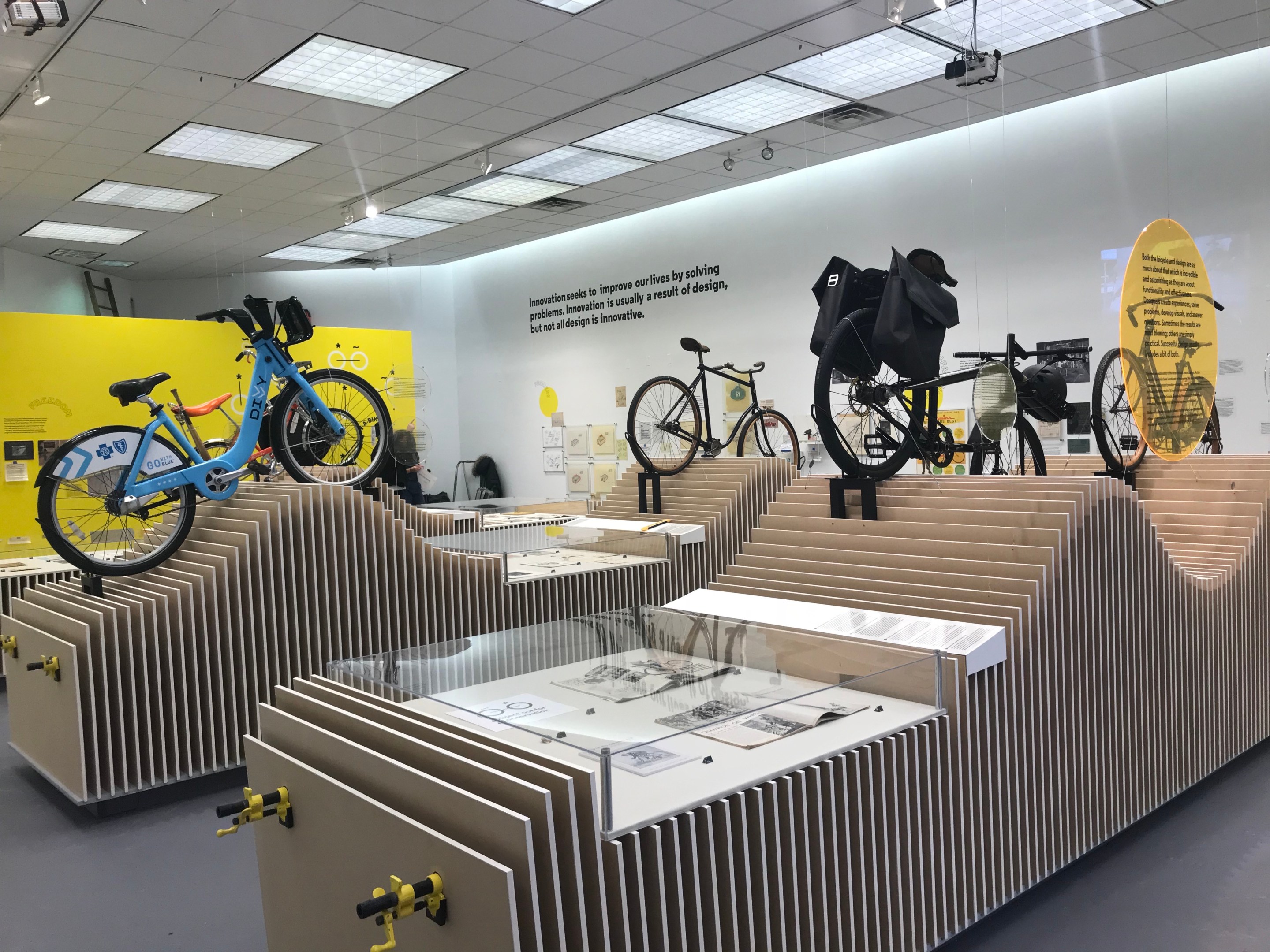
Photo: Ariel Parrella-Aureli
On Thursday, November 1, 6-7 p.m. at the exhibit, 72 E. Randolph, Streetsblog Chicago reporter Lynda Lopez will appear on a panel with representatives of the Chicago Department of Transportation, the Active Transportation Alliance, and West Town Bikes.
Hosting an exhibit highlighting the connections between design and cycling was an idea thrown around for a couple of years at the Design Museum of Chicago but it didn’t come to fruition until this year. For Lauren Boegen, curator of the museum’s new pop up exhibit “Keep Moving: Designing Chicago’s Bicycle Culture,” showcasing bike culture and its relationship to design, seemed to fit the spirit of 2018. In a cycling capital like Chicago, talking about bikes has been a cultural staple for over a century, and cycling's place in contemporary culture has never been more alive. The history of Chicago cycling goes back to the 1890s at least, which is where the exhibit starts, ending at 1980.
The show opened October 27 at the pop-up space Expo 72, located downtown at 72 East Randolph, and it runs through March 3. It’s part of Chicago Design Week, which runs until November 3, and Art Design Chicago; both are celebrations of the role Chicago plays in connecting design and creativity with multiple events throughout the city.
Keep Moving focuses on Chicago’s bike history through innovation and cultural symbolism, and how design has influenced bike culture from the past to present. Connecting community and design through bike projects like Blackstone Bicycle Works, a Woodlawn-based community bike shop and youth education program, has a prominent spot in the exhibit as well. Blackstone created an installation made out of bike parts and wheels with a storyboard featuring many images of bikes, plus a replica of a repair work station. The word “boom” screams out from behind the strings of bike parts hanging over the storyboard as if to say, "Look what we can do with our hands." And the handiwork of cycling connects design to community through education and needs, all aspects Boegen wanted to hit on in the show. Blackstone brings it all together, she said.
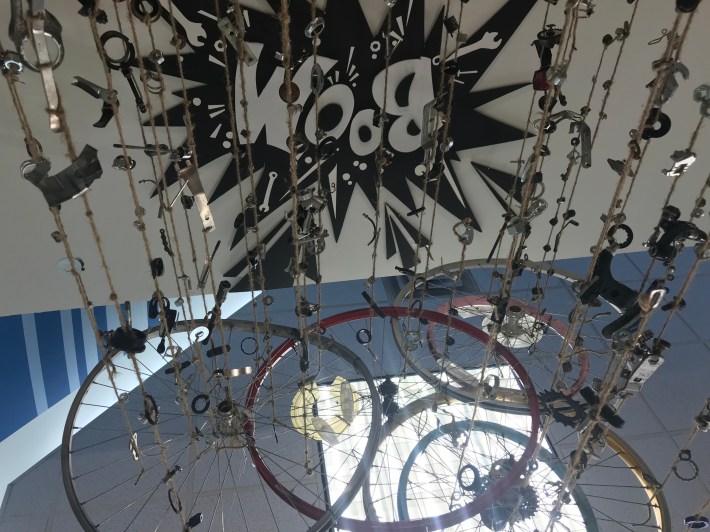
“The bicycle shop is a community built around the bicycle as an object but isn’t necessarily a bicycle community,” she said of Blackstone, which answered the challenge of bringing education and opportunity to children on the South Side through cycling. “The bicycle is the tool for that but not necessarily the focus—the kids are the focus.”
Tanner Woodford, executive director of the Design Museum, shared his admiration for Blackstone and its emphasis on instilling youth with a good work ethic and other values. For example, the program participants wear different color aprons, with each color representing the level of mechanical proficiency they have achieved, similar to the colored belts worn in martial arts.
With five modern bikes on display, as well as two collector's cycles dating back to 1888, plus vintage illustrations, artifacts, magazines, and advertisements from local manufacturers, the exhibit shows the process of designing bikes to help communities and not just focusing on the physical shape of the bike. The process of its growth – both through history and from a manufacturing standpoint — was made clear by Boegen because she wanted to show that process is just as important as the finished product. “Demystifying how design happens is really important,” she said.
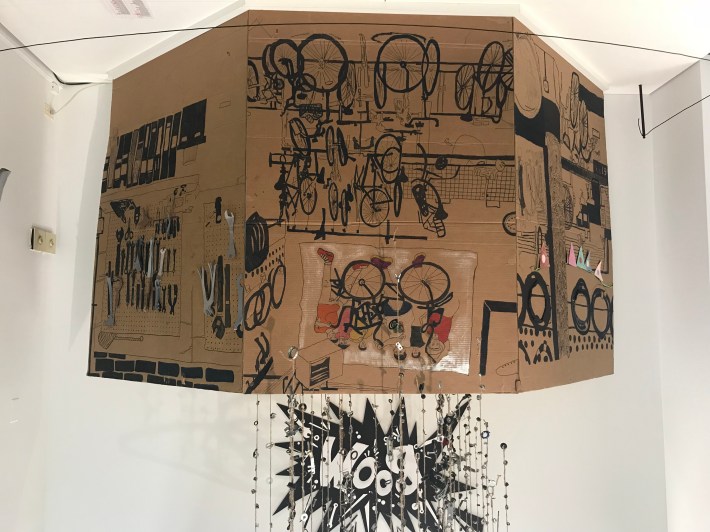
Woodford said looking at archived sketches of old bike pedals on display was another strong example of bike design progression and one of his favorite parts of the exhibit.
Cycling also intersected with gender and class, an important part of its history not to be overlooked. The exhibit has one wall dedicated to how the bike broke gender and class boundaries as it gained more popularity and accessibility in the 1890's. Companies like Crescents used women with bikes in their advertising posters to encourage women to ride and care for their own bikes. A manual geared towards women with instructions on how to ride and repair bikes is also on display.
One cannot discuss the history of Chicago bike culture without noting the strong influence of local companies like Arnold, Schwinn, Sears, Roebuck and Co., and Western Wheel Works. The show explores their history on Chicago’s cycling manufacturing scene and what contemporary community-led organizations like Blackstone, Active Transportation Alliance and West Town Bikes are doing to advance cycling culture and awareness.
“A bike really is an extension of a person’s identity in a lot of ways," Woodford said. “It feels to me that when you see someone’s bike, you can immediately understand a lot about them.”
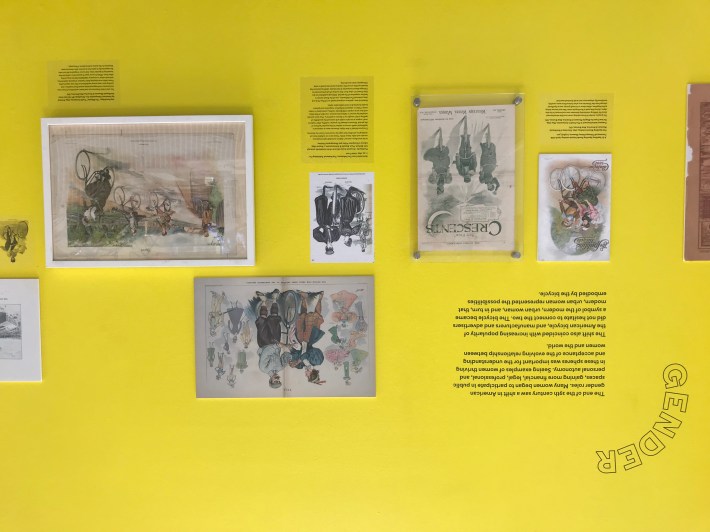
Boegen said part of her goal with this project was to make it interactive and educational as well. She and Woodford invited speakers active in the worlds of design, urban planning and cycling to share expertise on where these movement intersect with cycling. The first event, “Chicago Cycles: 150 Years of Bicycle Design and Innovation” will be presented by Christopher Sweet, a bicycle historian and associate professor at Illinois Wesleyan University this Saturday, November 3 at 3:30 p.m. at the pop up. “Beauty and the Bike: The Impact of Recreational Changes on Park Designs” will be presented by Julia Bachrach, author and urban planner on Dec. 6 at 6 p.m. The last free program will be Dec. 15 at 1:30 p.m. and will bring that gender discussion back into play. “From Bloomers to Pedal Pushers to Rompers: Riding Bikes in Style” will be led by Petra Slinkard, curator of fashion and textiles at the Peabody Essex Museum, and Boegen, who is also the museum’s executive director of operations and collections.
“I wanted to try to recreate the experiences I have had to encourage people to think about cycling from different perspectives,” Boegen said of the events.
Looking into the future, both Boegen and Woodford try to think optimistically about the role bikes will play down the line. “Fundamentally, the way we move from place to place is going to change,” Woodford said. “I suspect people will flock to bikes especially in places like Chicago where it’s easy.”
Boegen acknowledged not all cities or urban areas have flat, easily bikeable landscape like Chicago and not everyone feels safe riding here, and bike crashes are still common. But all evidence suggests that ridership in Chicago and other U.S. cities is only going to increase in the future.
“It would be amazing if rather than making [biking] be about recreation or 15 minutes from the train to your office, [cycling became] more about a long-term life commitment,” Boegen said.
![]()
Did you appreciate this post? Consider making a donation through our PublicGood site.
Stay in touch
Sign up for our free newsletter
More from Streetsblog Chicago
One agency to rule them all: Advocates are cautiously optimistic about proposed bill to combine the 4 Chicago area transit bureaus
The Active Transportation Alliance, Commuters Take Action, and Equiticity weigh in on the proposed legislation.
State legislators pushing for merging CTA, Pace, and Metra into one agency spoke at Transit Town Hall
State Sen. Ram Villivalam, (D-8th) and state Rep. Eva-Dina Delgado (D-3rd), as well as Graciela Guzmán, a Democratic senate nominee, addressed the crowd of transit advocates.



